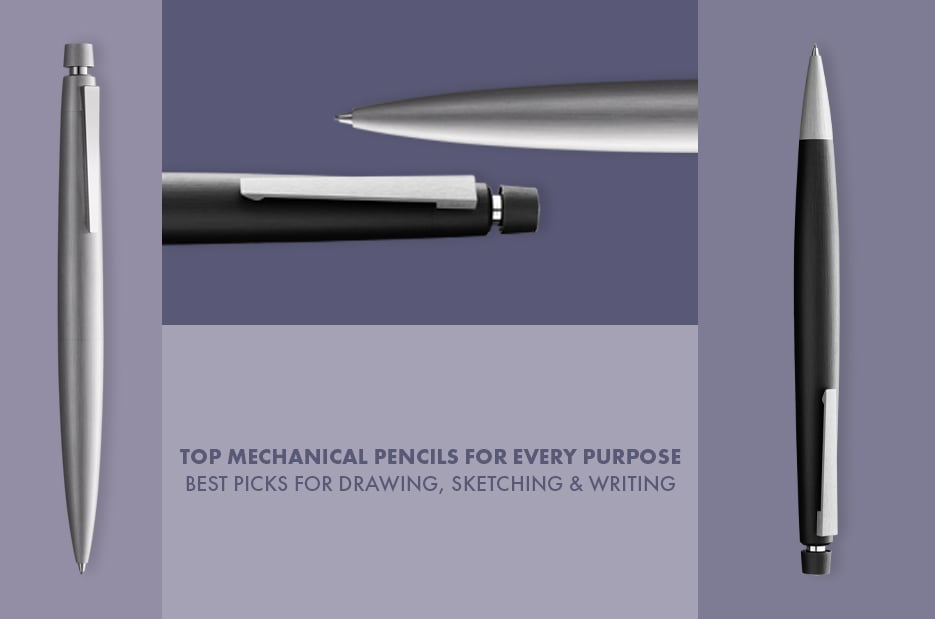Ballpoint vs Rollerball - What's the Difference?

It gets confusing at times to decide on the ideal pen for yourself. Ballpoint pens and Rollerball pens are the most common pens people generally use. However, differentiating between ballpoint pens and rollerball pens gets tricky. Both of these pens seem very similar yet are very different while using.
Did you know that the writing quality of both of these pen types really differs from each other? Yes, you read that right. These two pens have so many differences. Which one’s better? Which of these runs more smoothly? Which one should you prefer? This blog will tell you about all of it!
Ballpoint Pens vs. Rollerballs
Rollerball pens and ballpoint pens are two popular writing instruments that have unique characteristics and are commonly used for different purposes. Let's delve into their definitions and explore the key differences between them.
Rollerball Pen
A rollerball pen, as the name suggests, employs a small ball at the tip of the pen to distribute ink onto the paper. This ball is typically made of ceramic, tungsten carbide, or steel and is surrounded by a reservoir of liquid ink or gel ink.
When pressure is applied to the pen, the ball rotates, allowing the ink to flow smoothly onto the paper. Rollerball pens offer a more fluid and effortless writing experience due to the liquid or gel ink, resulting in crisp lines and vibrant colors.
Also Read: Advantages of Writing with Ballpoint Pens
Ballpoint Pen
On the other hand, a ballpoint pen utilizes a small ball made of brass, steel, or tungsten carbide at the pen's tip. Unlike rollerball pens, ballpoint pens use thicker, oil-based ink that is viscous and dries quickly.
When the ball rotates, it picks up the ink from a reservoir inside the pen and transfers it onto the paper. The oil-based ink used in ballpoint pens is less prone to smudging and offers a more consistent and reliable writing experience, particularly on smooth surfaces like glossy paper.
Key Differences Between Ballpoint Pens & Rollerballs
1. Ink Consistency
Rollerball pens use liquid or gel ink, which results in a smooth and effortless writing experience. Ballpoint pens, on the other hand, utilize oil-based ink, which is thicker and dries quickly, providing a more controlled and consistent writing flow.
2. Writing Experience
Rollerball pens require less pressure to write, allowing for a more comfortable and fluid writing experience. Ballpoint pens require slightly more pressure due to the thicker ink, which can make writing for extended periods slightly more fatiguing.
Also Read: Troubleshooting Ballpoint Pens: Causes and Fixes
3. Ink Performance
Rollerball pens offer vibrant and saturated colors due to the liquid or gel ink, making them suitable for creative writings, artwork, or expressive writing. Ballpoint pens, with their oil-based ink, produce more consistent and fade-resistant lines, making them ideal for tasks like note-taking, document signing, or writing on different surfaces.
4. Drying Time
Rollerball pen ink takes longer to dry compared to ballpoint pen ink. This slower drying time can be advantageous for some tasks but may lead to smudging or smearing if the writing is not given adequate time to dry.
Also Read: How to Properly Store Your Pen Collection?
5. Refill Options
Both rollerball pens and ballpoint pens typically have refillable options available, allowing you to replace the ink cartridge instead of disposing of the entire pen. However, the types of refills and compatibility may vary across different pen brands and models.
Summing Up
Rollerball pens and ballpoint pens offer distinct writing experiences due to their different ink formulations and design. Rollerball pens excel in providing a smooth and vibrant writing experience, while ballpoint pens offer reliability, quick-drying ink, and versatility across various writing surfaces. By understanding these differences, you can choose the pen that best suits your writing preferences, tasks, and personal style.
















Comments